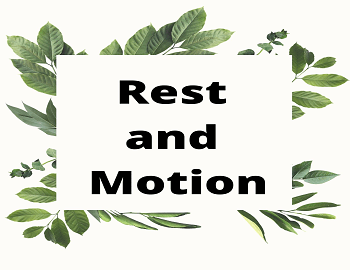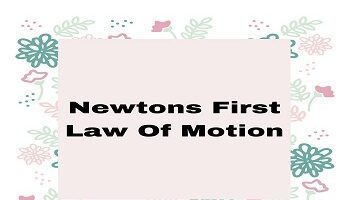Rest and Motion:
If the position of an object placed on the ground remains the same with respect to its surroundings, it is said to be at rest. On the other hand, an object changing its position with respect to the position of the other surrounding objects is said to be in motion. Motion can, therefore, be defined as the continuous process of change of position. Thus, a college building, a tree, a garden, a playground are at rest because they remain at the same fixed place with respect to their surroundings while a train passing by a station changes its position with respect to the station and hence it is in motion. Since there is nothing in the universe which is fixed, the concept of absolute rest is wrong. Though a tree is considered to be at rest, it actually shares the motion of the earth which rotates about its axis and also revolves around the sun. Thus, rest or motion of an object is expressed with respect to another object which we assume to be at rest. Rest and motion are purely relative terms. The trees are at rest with respect to the moving bus but the bus itself in motion with respect to the trees.
The motion of a body may be translatory or rotatory.
In a translatory motion, a body moves from one place to the other in such a way that its each particle covers the same distance in the same time.
The falling of a mango from its tree is an example of translatory motion.
In a rotatory motion, a body moves about a fixed point or axis and its each particle is always at a fixed distance from the fixed point or axis.
The movement of a gramophone disc is an example of rotatory motion.
Sometimes a body may have both types of motions, translatory as well as rotatory. For example- the wheel of a car has a translatory motion due to its movement as a whole with the car and a rotatory motion because it moves about the axle.









Comments (No)